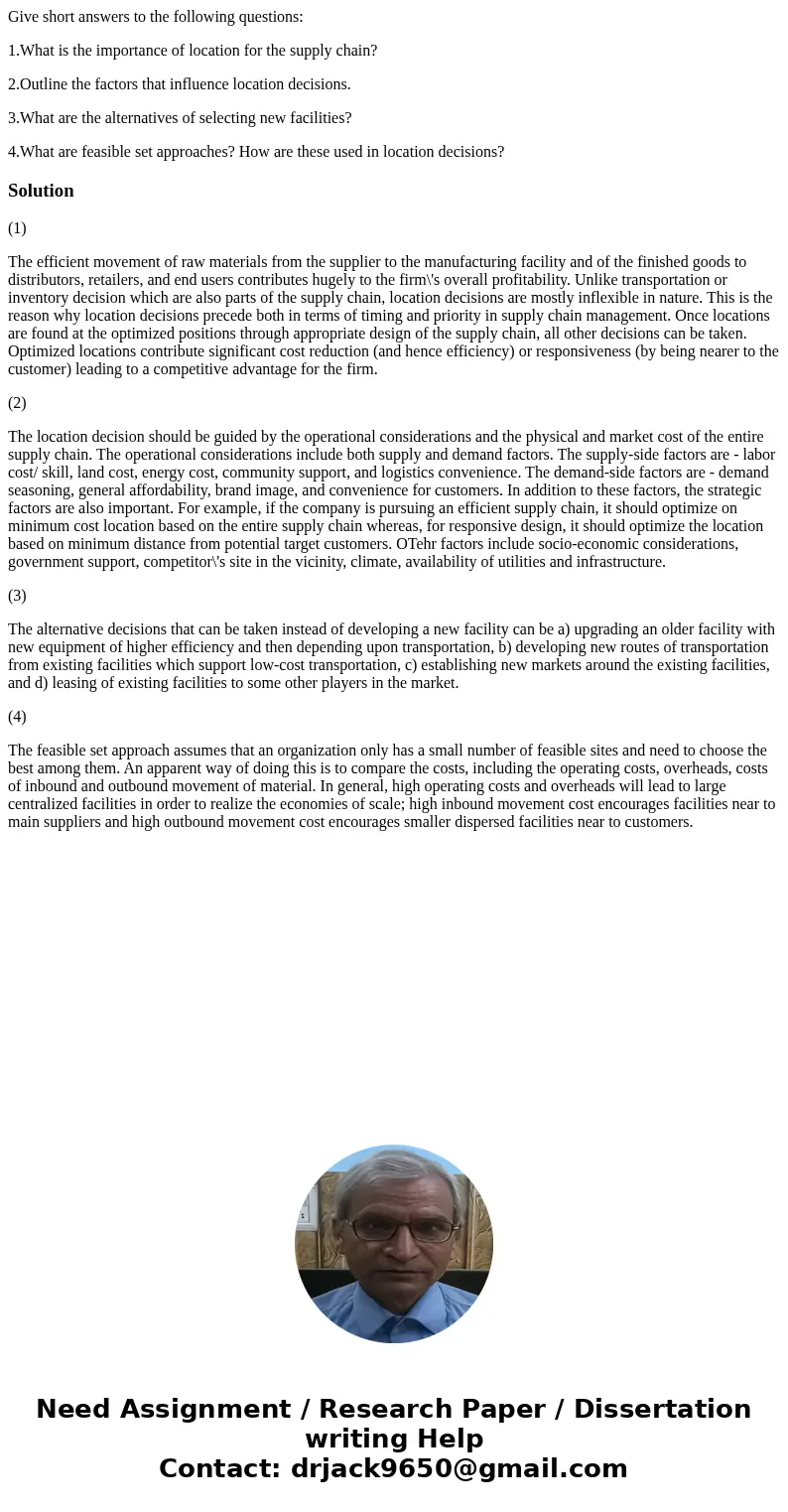Give short answers to the following questions 1What is the i
Give short answers to the following questions:
1.What is the importance of location for the supply chain?
2.Outline the factors that influence location decisions.
3.What are the alternatives of selecting new facilities?
4.What are feasible set approaches? How are these used in location decisions?
Solution
(1)
The efficient movement of raw materials from the supplier to the manufacturing facility and of the finished goods to distributors, retailers, and end users contributes hugely to the firm\'s overall profitability. Unlike transportation or inventory decision which are also parts of the supply chain, location decisions are mostly inflexible in nature. This is the reason why location decisions precede both in terms of timing and priority in supply chain management. Once locations are found at the optimized positions through appropriate design of the supply chain, all other decisions can be taken. Optimized locations contribute significant cost reduction (and hence efficiency) or responsiveness (by being nearer to the customer) leading to a competitive advantage for the firm.
(2)
The location decision should be guided by the operational considerations and the physical and market cost of the entire supply chain. The operational considerations include both supply and demand factors. The supply-side factors are - labor cost/ skill, land cost, energy cost, community support, and logistics convenience. The demand-side factors are - demand seasoning, general affordability, brand image, and convenience for customers. In addition to these factors, the strategic factors are also important. For example, if the company is pursuing an efficient supply chain, it should optimize on minimum cost location based on the entire supply chain whereas, for responsive design, it should optimize the location based on minimum distance from potential target customers. OTehr factors include socio-economic considerations, government support, competitor\'s site in the vicinity, climate, availability of utilities and infrastructure.
(3)
The alternative decisions that can be taken instead of developing a new facility can be a) upgrading an older facility with new equipment of higher efficiency and then depending upon transportation, b) developing new routes of transportation from existing facilities which support low-cost transportation, c) establishing new markets around the existing facilities, and d) leasing of existing facilities to some other players in the market.
(4)
The feasible set approach assumes that an organization only has a small number of feasible sites and need to choose the best among them. An apparent way of doing this is to compare the costs, including the operating costs, overheads, costs of inbound and outbound movement of material. In general, high operating costs and overheads will lead to large centralized facilities in order to realize the economies of scale; high inbound movement cost encourages facilities near to main suppliers and high outbound movement cost encourages smaller dispersed facilities near to customers.

 Homework Sourse
Homework Sourse